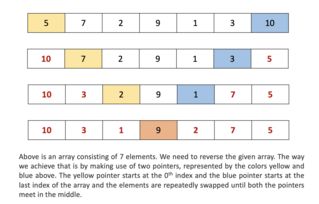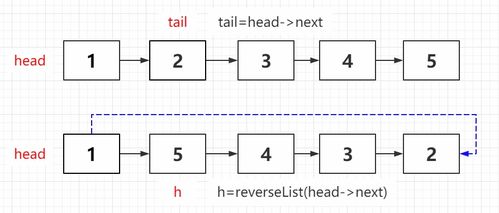Reverse Linked List: A Comprehensive Guide
Are you ready to dive into the fascinating world of linked lists? If so, you’ve come to the right place. In this article, we’ll explore the concept of reversing a linked list, a common problem in the realm of data structures. By the end of this guide, you’ll have a clear understanding of how to reverse a linked list and why it’s an essential skill to master.
Understanding Linked Lists

Before we delve into reversing a linked list, let’s first understand what a linked list is. A linked list is a linear data structure consisting of nodes, where each node contains a value and a reference (or link) to the next node in the sequence. This structure allows for efficient insertion and deletion of elements, making it a popular choice in various applications.
There are two types of linked lists: singly linked lists and doubly linked lists. In a singly linked list, each node has a reference to the next node, while in a doubly linked list, each node has references to both the next and the previous nodes. For the purpose of this article, we’ll focus on singly linked lists.
Reversing a Linked List: The Basics

Reversing a linked list means changing the direction of the links between nodes, so that the head of the list becomes the tail, and vice versa. This can be achieved by iterating through the list and adjusting the pointers of each node.
One common approach to reverse a linked list is to use three pointers: prev, curr, and next. Here’s a step-by-step guide on how to reverse a linked list using this approach:
- Initialize prev and curr pointers to NULL and head of the list, respectively.
- Iterate through the list until curr becomes NULL.
- Within each iteration, store the next node using the next pointer.
- Adjust the curr node’s next pointer to point to prev.
- Move prev and curr pointers one step forward.
- Set the head of the list to prev.
Here’s a sample code snippet in Python to reverse a linked list:
def reverse_linked_list(head): prev = None curr = head while curr: next_node = curr.next curr.next = prev prev = curr curr = next_node return prevReversing a Linked List: Time and Space Complexity

Now that we know how to reverse a linked list, let’s discuss the time and space complexity of this operation. The time complexity of reversing a linked list is O(n), where n is the number of nodes in the list. This is because we need to iterate through each node once to adjust the pointers.
The space complexity of reversing a linked list is O(1), as we only need a constant amount of extra space to store the pointers. This makes reversing a linked list an efficient operation in terms of space usage.
Reversing a Linked List: Real-World Applications
Reversing a linked list is a fundamental operation that has various real-world applications. Here are a few examples:
-
Database indexing: Reversing a linked list can be useful in database indexing, where we need to reverse the order of records for efficient searching.
-
Memory management: In some memory management algorithms, reversing a linked list can help in optimizing memory usage.
-
Data compression: Reversing a linked list can be used in certain data compression techniques to improve the efficiency of the compression process.
Reversing a Linked List: Conclusion
Reversing a linked list is a crucial skill to have in your data structure arsenal. By understanding the basics of linked lists and the process of reversing them, you’ll be well-equipped to tackle various problems in the field of computer science. So, go ahead and practice reversing linked lists, and you’ll be amazed at how much it enhances your problem-solving abilities.
| Time Complexity | Space Complexity |
|---|---|
| O(n) | O(1) |

















